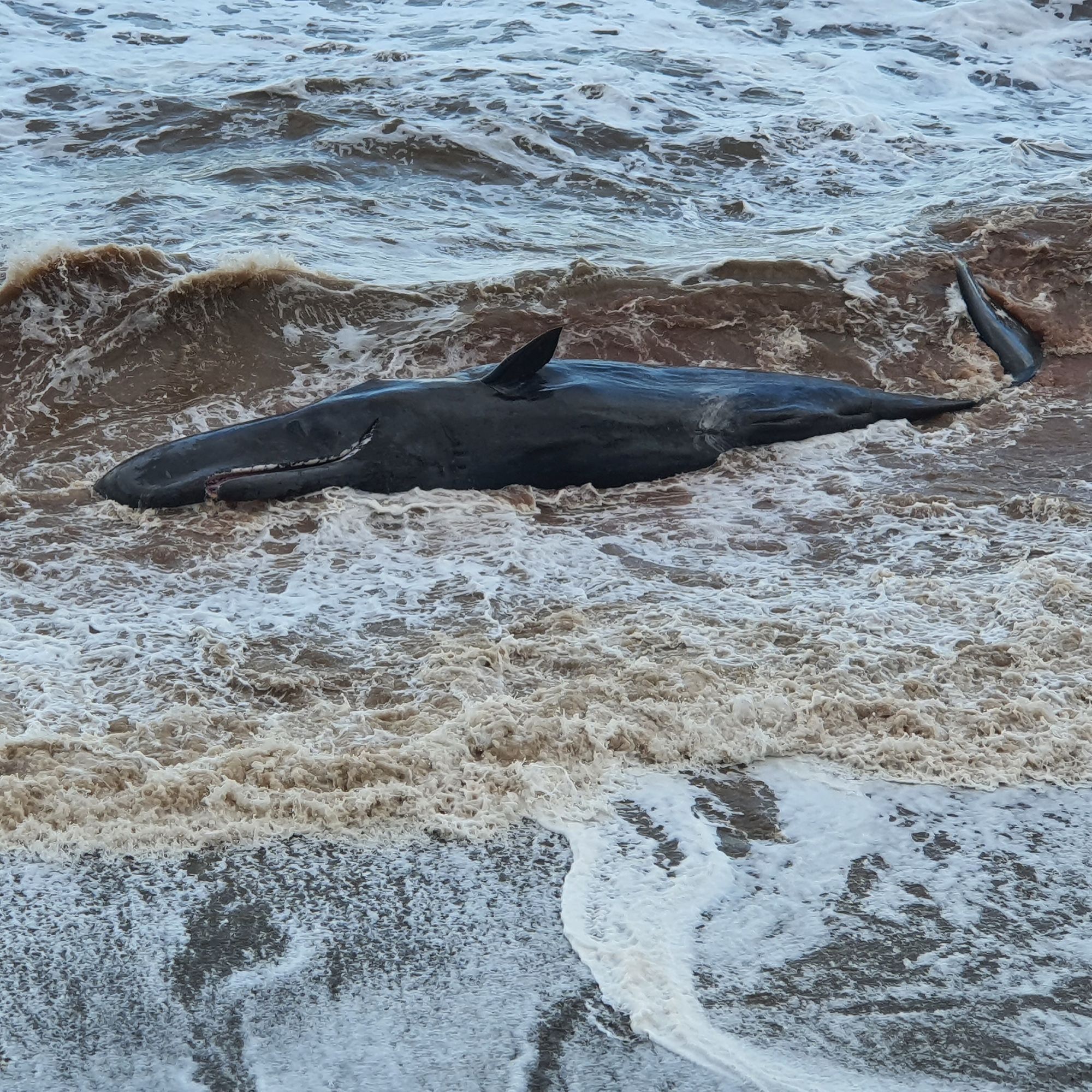
How to save the whales
For one group of volunteers, whale conservation is a hands-on task that can take place at any time and in any weather.
It was Christmas Eve last year, and bitingly cold, when Dave Leng received the phone call from head office. A pod of whales had stranded along the East Yorkshire coast, and he needed to get to the beach. Fast.
He scrambled into a change of clothes, grabbed the trailer loaded with rescue equipment, and headed out into the blizzard. Time was of the essence: a beached whale could have just hours to live, its organs crushed under the weight of its own body without the ocean water to keep it buoyant.
It took Leng an hour and a half to drive to the coast, and his phone kept ringing all the way, keeping him informed of every new piece of information. However, it wasn’t until he reached Hull that he got the most shocking update: the animals that had become stranded were sperm whales.
Although he didn’t know it at the time, Leng was about to witness the UK’s biggest sperm whale stranding since records began in 1913. Most people will never see one of these magnificent creatures in the wild. Listed as vulnerable by the IUCN, sperm whales mostly occupy the deeper waters of the North Sea, and rarely show up along the British coastline. Live strandings of any species are also rare: the majority of the cetaceans that wash up along Britain's shores are already dead.
As Leng approached the clifftop, he could see the heavy bodies of the ten juvenile animals. One was thrashing about, hitting against the groins that marched up the beach. Without human help, they would not be able to make it back out to sea. But the ocean was rough, and the only access to the beach was down the sheer cliff face – and the tide was coming in.
“It's just surreal and frightening at the same time to see something that size out of the water, flapping around and thinking: nothing is going to happen, unless we intervene,” says Leng. In the past, he has helped to rescue several stranded porpoises, dolphins, and even other species of whales. But this time, a distressing reality set in: there would be no Christmas miracle. The whales were doomed.


Leng is a member of British Divers Marine Life Rescue (BDMLR), a volunteer-led charity devoted to saving marine life in distress – a kind of RNLI for non-human life. The organisation was founded in 1988 by a group of divers who wanted to help after a mass seal mortality event in East Anglia. Since then, the network has grown: they train over 1,000 new volunteers each year to help rescue marine animals around the UK. In 2020 alone, their rescue teams attended 73 live stranding events.
Rescuing a stranded whale is a complex and multifaceted endeavour. "There’s an awful lot to think about,” explains Alan Stewart, another BDMLR team member and coastguard officer who attended the sperm whale stranding that day.
Incident response involves uncovering full details of the event – the species, when it beached, the surface on which it has stranded – and creating both a strategy and a back-up plan. It means deciding whether it’s safe for medics to enter the water, and keeping the animal wet and cool. But it also means corresponding with the press and dealing with concerned bystanders, who can waylay the rescue operation.
Interacting with such large, powerful animals can be very dangerous – even a blow from a dolphin’s thrashing tail can cause significant damage. An 18m-long whale is larger than a double decker bus. “You almost can't comprehend their size,” says Stewart.
One of the whales – stranded further down the coast in a heavy footfall location – was getting lots of public attention. Some people were breaking into tears at the sight. But there was also anger.
“Everybody becomes experts,” says Leng. “Why can't you do anything? Why don't you get a ship? Why don't you get a helicopter? All sorts.” The criticism and occasional abuse for “not doing enough” can compound the stress for the rescuers. “It was hard for everybody,” he remembers.
Then there are those who are less well-intentioned. In the days that followed, some people were propping their children on the dead whales and taking photos, despite the stench of rotting flesh and the tendency for whale corpses to blow up as gases accumulate after death.
One night, four whales had their lower jaws stolen. It is suspected that the thieves came by boat and used a chainsaw to remove the bones. Nor is such behaviour unusual. Around two weeks later, another sperm whale, this time washed up on the North Norfolk coast, also had its jaw sawn off. In 2006, fishermen removed the jaw from a sperm whale stranded on the Moray coast, intended for scrimshaw – the traditional whalers’ art of carving in bones – but was returned following negotiations with police.
Whales become stranded for various reasons. Individuals may be lost, sick or injured, and rescue teams will only attempt to refloat a healthy animal to avoid prolonging any suffering. In the UK, which has no captive cetacean facilities, the only other option is euthanasia.
The anthropogenic influences on such events are difficult to disentangle. The Natural History Museum has been collecting records of strandings around the coast of Britain and Ireland since 1913 – over 20,000 in total – creating one of the most comprehensive databases in the world.
Though records increased dramatically from the 1980s, this is likely down to the creation of formal stranding networks rather than an actual increase in strandings. Analysis found no correlation between certain environmental indicators – including storms, geomagnetic activity, sea surface temperatures and fishing catch – and the number of cetaceans turning up on beaches around the coast.
And, counterintuitively, more strandings may be a sign of healthier and more abundant cetacean populations. In the 1950s, for instance, there was a decrease in the number of baleen strandings, but this was thought to be down to a surge in commercial whaling following World War II, which lowered overall populations. When an international moratorium on whaling came into effect in 1987, standings increased again.
However, none of this means that humans aren’t having an impact. Other studies have shown that bycatch and entanglement can cause strandings, and the UK records show that harbour porpoise and common dolphin strandings are particularly common around Cornwall and the Isles of Scilly, where fishing pressures are most intense. And the analysis did not consider some other factors that have been linked to strandings, including chemical contamination, ship sonar and boat strikes.
Why do volunteers put up with this cold, exhausting and emotionally draining work? For all the failures, there are also the happier tales that make the heartbreak worthwhile.
Stewart remembers the time a 30-foot juvenile fin whale became stuck in the mud. He was enlisted to help, alongside a group of fire and rescue officers who happened to be on a course nearby. The situation looked bleak, but they made a last ditch attempt to free the animal by making waves with the lifeboat.
And it worked – the ripples freed the whale. Now, just inches under the muddy water, the team had no idea where it was. “I've never seen 28 firemen move so quickly,” laughs Stewart. Shortly after, they were relieved to see the whale breach further out to sea before swimming away. Against all odds, a successful rescue.
Subscribe to our newsletter
Members receive our premium weekly digest of nature news from across Britain.
Comments
Sign in or become a Inkcap Journal member to join the conversation.
Just enter your email below to get a log in link.







